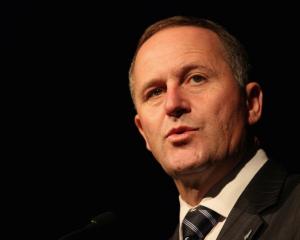
The measures are part of a $790 million package which targets up to 200,000 of the worst-off families and also includes extra cash for many on Working for Families. It is National's response to Prime Minister John Key's pledge after the election to focus on child poverty.
In a surprise move for a National Government benefit payments for 110,000 families with children will go up by $25 a week after tax on top of the usual inflation adjustments. That amounts to an 8.3 per cent increase in the current base benefit rate for solo parents of $301 a week.
It is the first increase to core benefit rates since 1972. Mr English said that was driven by concern beneficiary families were falling behind others because the benefit was pegged to inflation. That meant incomes for beneficiary families had stayed relatively flat in recent years compared to working families because wage increases outstripped inflation. While the gap between benefit levels and wages was an incentive into work, there was concern about the impact on children.
However, one controversial aspect of the new package is the requirement on sole parents to look for part-time work when their youngest child turns three. That is down from five years old now - when the child reached school age.
Sole parents will also have to reapply for the benefit every year, as those on the unemployment do. They will also be expected to take a minimum of 20 hours work a week rather than 15 now.
WORKING FOR FAMILIES
Low-income parents who qualify for Working for Families will also get up to $24.50 more a week in tax credits, taking the base rate from $60 to $72.50. However, that will be partly paid for by an average $3 a week cut to the payments for 18,000 families earning more than $88,000 a year who currently receive Working for Families.
The increase is expected to benefit about 4000 families who earn less than $27,000 a year and who will get an extra $24.50 a week. A further 50,000 families earning up to $36,350 will get $12.50 more while about 150,000 families on higher incomes will get also get small amounts.
CHILDCARE:
Childcare subsidies for low income families will increase from $4 an hour to $5 an hour for up to 50 hours childcare a week - a change expected to benefit 18,000 families by about $23 a week The subsidy is aimed at making it easier for beneficiaries and low-income workers to get and stay in work. The subsidy is available to those in employment, education or training and pays for pre-school, after school and holiday programmes.
Those with one child will get the extra if they earn less than $41,600 while those with three or more receive it if they earn less than %53,560.
Mr English said that overall the child hardship package would cost about $240 million a year from 2016, adding up to $790 million over the next four years.
Mr English said requiring parents to look for work when a child turned three was reasonable. He said the work obligations introduced in 2010, coupled with more intensive case management, was received positively by many parents who saw it as a way out of hardship. "The best thing we can do for these children is to get their parents into sustainable full-time work where that is possible." It also aligned with the 20 hours free early childhood education policy which was available when a child turned three.
He said the Government believed the best route out of poverty was work and changes such as the work obligations had resulted in 42,000 fewer children living in benefit-dependent households over the past three years. Work obligations were first imposed on single beneficiary parents in 2010 as part of the Government's welfare reforms. Mr English said two thirds of children in poverty lived in households which were dependent on benefits and about nine in ten beneficiary families were sole parent families.
Parents still have to look for full time work when their child turns 14 Prime Minister John Key said the package was driven by his post-election pledge to make children in hardship a focus of his third term in Government.
"There is still a group of children who, through no fault of their own, are in families where there is considerable hardship. We are firmly focused on helping these children out of the cycle of hardship."
In addition to the $750 million hardship package, the Budget also includes $8.5 million to pay for up to 10,000 extra intensive case management workers who work with those with health issues, disabilities and those in danger of becoming long-term beneficiaries, $15.4 million for the 'boot camps' Limited Services Volunteer courses.
Other aspects of the hardship package include $36 million over the four years for the Children's Action Plan targeting the most vulnerable children, $23 million a year to boost Child Youth and Families' case management and $8 million to support education and training for vulnerable students.
The sweet:
* $25 a week increase to benefits for parents with children. Expected to benefit 110,000 families with 190,000 children.
* $24.50 more in Working for Families payments for 4,000 households earning less than $27,000. Takes base rate of In-Work Tax Credit from $60 to $72.50 a week.
* $12.50 a week more in Working for Families payments for 50,000 households earning $27,000 - $36,350.
* Childcare subsidies for low income working families increase from $4 an hour to $5 an hour - benefits 40,000 families.
The sour:
* Parents on the benefit have to look for work when youngest child turns 3 - down from 5 years old now.
* Expected to take 20 hours work a week - up from 15 hours currently.
* Abatement rates for Working for Families increase, resulting in an average $3 a week cut in Working for Families payments for 18,000 households earning more than $88,000
* Sole parents have to reapply for the benefit each year.
* the changes take effect from April 1, 2016.
- Claire Trevett of the New Zealand Herald




